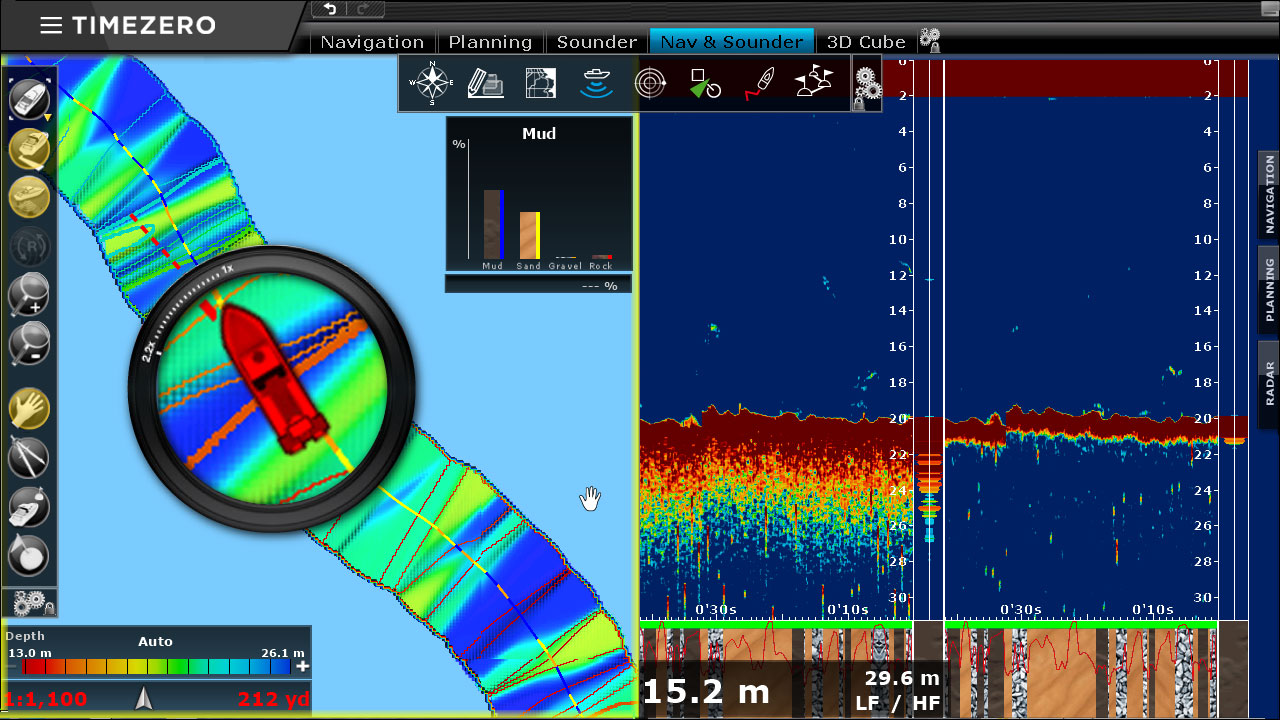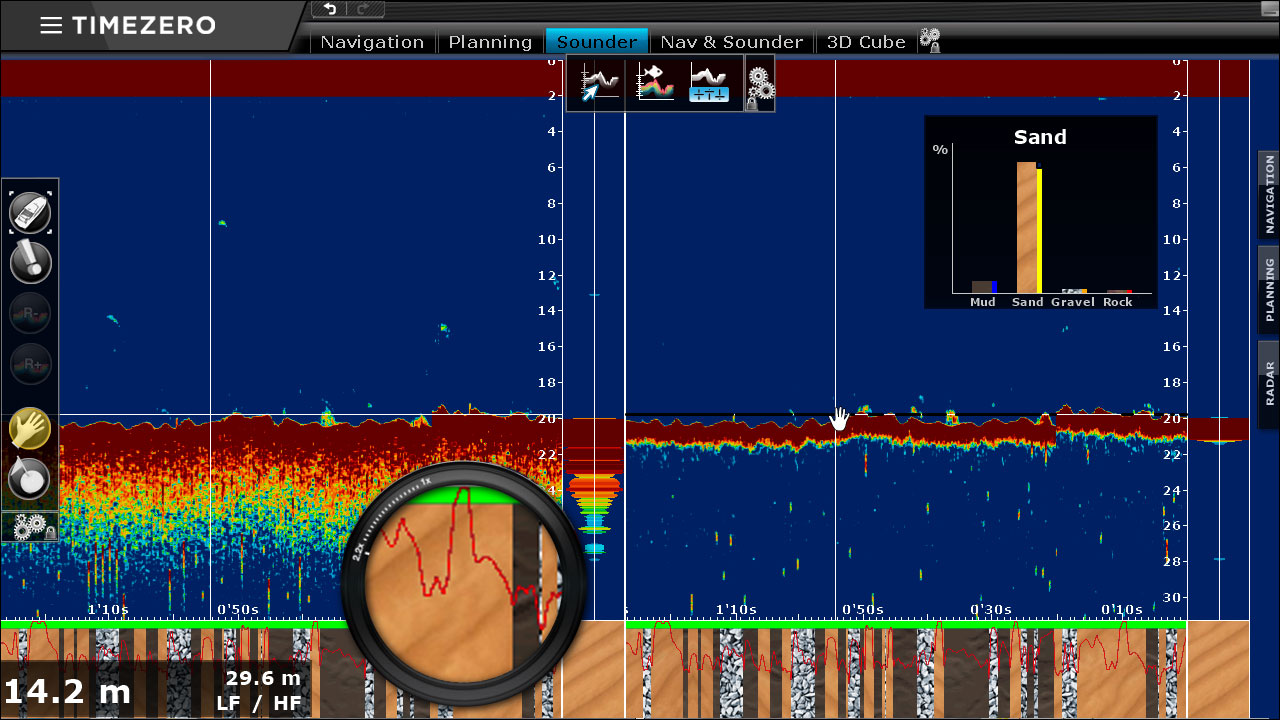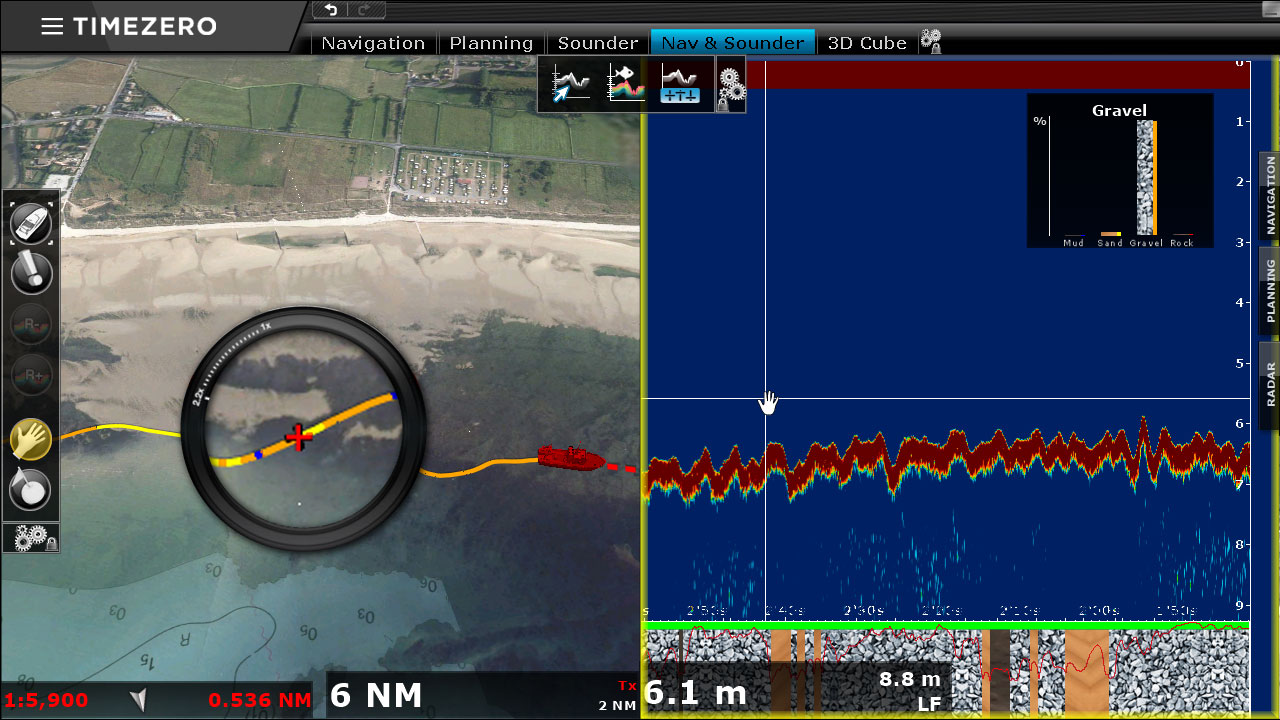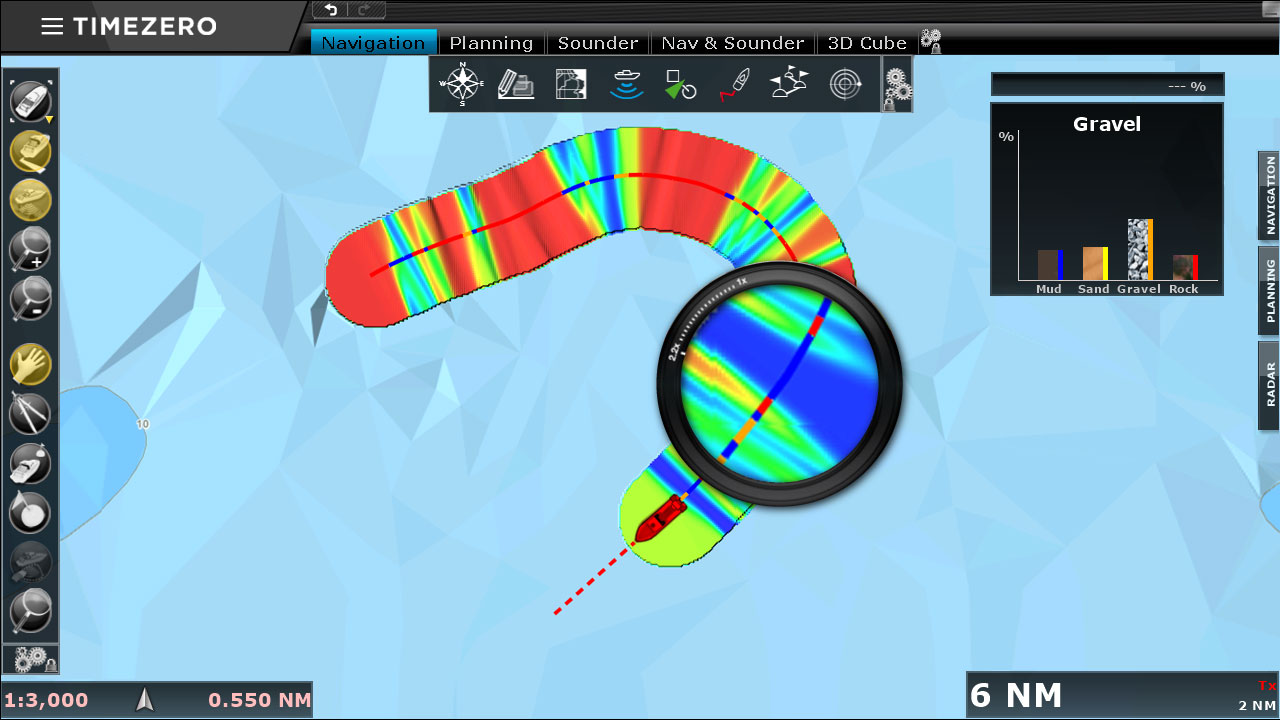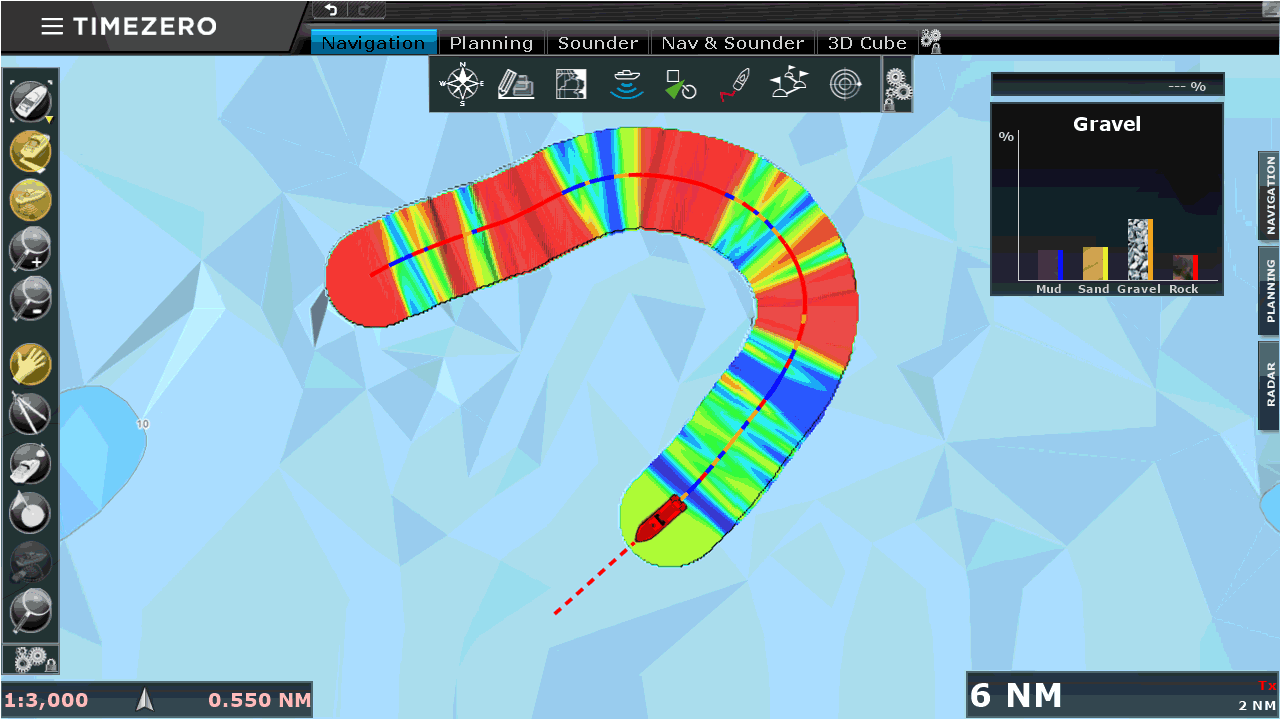The Characteristics of Sedimentary Charts
Ideal for commercial fishermen and sport fishing, but equally to scientists, sedimentological charts provide seafloor classification on the following criteria: the type of seafloor surface (rock, gravel, sand, mud) and the density of the material.
Official charts are provided by specialized organizations such as IFREMER. Also by connecting to specialized Furuno sounders, TIMEZERO displays the data and information in precise and detailled fashion directly on your screen, to create your own sedimentological chart.
Customized Sedimentological charts in TIMEZERO
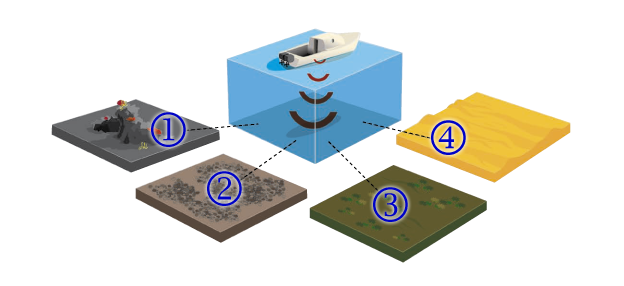
Legend: 1 Rock 2 Gravel 3 Mud 4 Sand
It is designed mainly for commercial fishermen, but also for scientific purposes as well as for recreational use. Using the information of the sedimentology and the density of the sedimentary rock, you can get valuable insights and save time and money on not going to a location that has low probability of catch.
The data available in the charts has been collected by the French Institute of Research for Sea Exploitation IFREMER and the Marine Oceanographic Hydrographic Service SHOM.
Identifying the Seafloor Structure
An alternative to these Sedimentology Charts which are limited to certain areas in the North Atlantic and the Mediterranean is picking up a Furuno Sounder (BBDS1 and DFF1-UHD) which can be directly set up with TIMEZERO software to receive information of the depths and the bottom discrimination.
All the data on the seafloor combined within a single tool
Defining the Seafloor Density
Thanks to the PBG module, TIMEZERO can display the discrimination as well as the density using a color scale directly on the chart.
